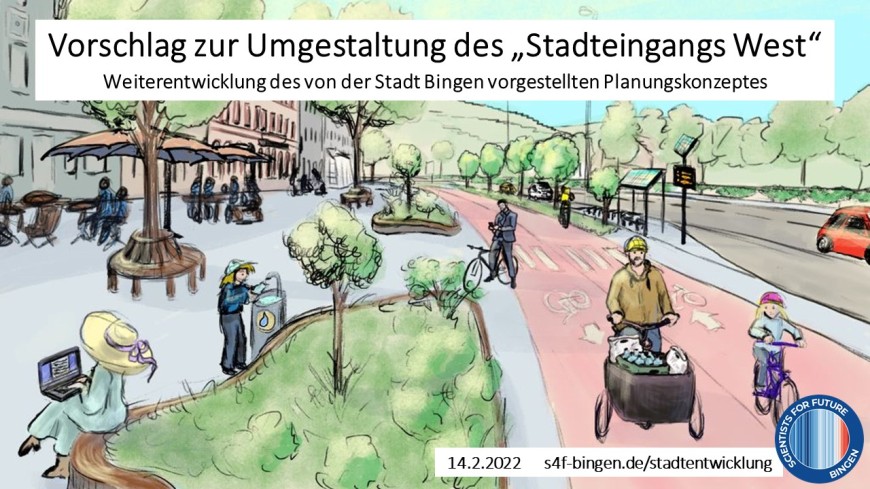The department advises Scientists4Future Bingen on climate-friendly urban development
2022/03/03
The Department of Spatial and Infrastructure Planning advises the Scientists4Future Bingen group on current urban development projects from a scientific point of view. The research assistant Benjamin Kraff advised the group in order to introduce the most sustainable measures possible into the debate in the city of Bingen.

At the end of January 2022, various planning variants for the redesign of the “West City Entrance” of the city of Bingen were presented as part of digital citizen participation. This includes the Gerbhausplatz, which is currently used as a parking area, and the Fruchtmarkt, an adjoining street axis.
During this event, the Scientists4Future campaigned for the consideration of climate-friendly urban development projects. The Department of Spatial and Infrastructure Planning supported and advised the group in the run-up to the development of specific measures. This was about the implementation of a sustainable infrastructure, which should also improve the microclimate of the urban area. Some measures are listed below:
- Attractive bicycle axis design between the Rhine and Nahe with connections in the direction of Bingerbrück, Stadtbahnhof, Stefan-George-Straße and in the direction of “CityCenter”
- Crossing-free, attractive cycle and footpath connection between Fruchtmarkt and Museumsstraße/Hindenburganlage through the design of the railway overpass exclusively for pedestrians, cyclists and emergency vehicles
- consistently separate traffic routing for pedestrians and cyclists, especially in the underpasses and in the planned roundabout
- two-lane, two-way cycle lane on the city side of Fruchtmarkt (instead of two-way cycle lanes)
- wider bike lanes
- wide sidewalks
- Don't tie up public funds in investments in parking garages, instead enable the funds to be used in the interests of climate protection
- Buildings should be implemented using as little building material as possible, so that they can be erected and dismantled with relatively little effort and a small ecological footprint
- general priority of bicycle traffic and pedestrian flows over motorized passenger traffic
- general priority of public transport over motorized private transport
- ongoing participation opportunities for citizens (especially residents) to promote acceptance

